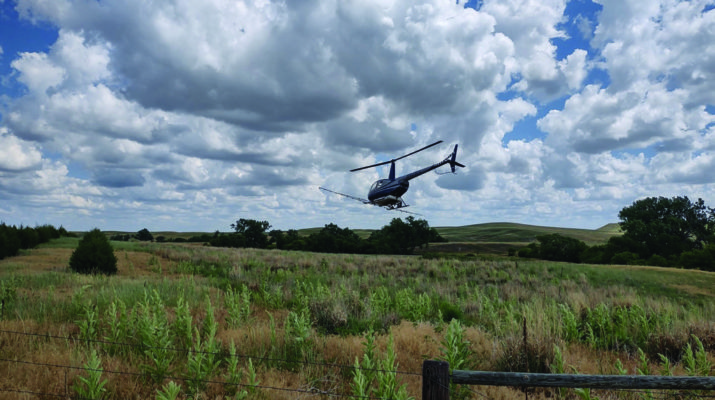By SCOTT BIDROSKI
Sheridan County Journal Star
An invasive and noxious weed surveying project, which will focus on waterways in Western Nebraska, is set to begin this week.
The Panhandle Research Integration for Discovery Education, otherwise known as P.R.I.D.E., is heading up the surveying project to get a grasp and head start on invasive and noxious weeds in the area’s precious waterways.
Helicopters will be utilized in Sheridan, Box Butte, Deuel, Sioux, Dawes, Cheyenne and Garden counties to locate areas of noxious and invasive weeds to target for spraying.
The dates the helicopters will be flying these counties are May 25 – June 3, weather permitting.
Nebraska boasts more miles of waterways and rivers than any other state in the United States.
All the more reason that the Chairman of P.R.I.D.E. and Sheridan County Weed Superintendent Seth Tausan is excited for this survey to begin.
“We are trying to prevent new invasive species from taking over our floodplains in Nebraska,” said Tausan.
“The goal is to keep the floodplains clean from these weeds because rain, water, wind, and animals can spread these weeds easily through the waterways,” he added.
If landowners are aware of noxious or invasive weeds that are currently in waterways on property that they own, they are strongly encouraged to contact their county’s Weed Superintendent. Having a bit of a lead on possible locations of these weeds will help with future treatments.
“If they give us a call before we fly the helicopter, they can let us know where it is and we can pinpoint it with GPS to help take care of it in the Fall,” said Tausan.
A project very similar to this was completed along the Republican River in Nebraska in 2007 and 2008.
Water levels in the Republican, which are essential to both Nebraska and Kansas, were a hot button topic for many years. Litigation was even filed by both states to secure water rights.
But a survey of the river on the Nebraska side revealed a slew of invasive and noxious weeds which were lowering water levels.
A plan was executed to control those weeds and the water level rose, easing the tensions between the two states.
Now while there is no pending litigation in the Panhandle, the results did not lie. And P.R.I.D.E. wants to get out in front of any future problems that could effect a very important resource in this part of the state; water.
Once the survey is completed in early June, then P.R.I.D.E. is going to apply for funding from the Nebraska Department of Agriculture Riparian Task Force grant funds to help control invasive and noxious weeds in the surveyed areas.
Before any spraying begins, notice will be posted for a minimum of four weeks in each counties local newspaper.
At any time, if individuals have questions about the surveying that is taking place this week or the spraying that is set to occur this fall, please contact your respective County’s Weed Superintendent. Their contact information can be found on their County’s website.
P.R.I.D.E. was created in 1998 with the purpose of building and maintaining partnerships between the many cooperators in invasive weed management and education.
Members of the organization attend many local events to help educate the public about these topics, along with distributing the Weed Watch publication to 116,000 people in 48 counties across Nebraska.
Tausan heads the organization as the Chairman and Dawes County Weed Superintendent Dan Wordekemper is the Vice Chairman.
More information about the organization can be found on their website, http://www.pridewma.org.

